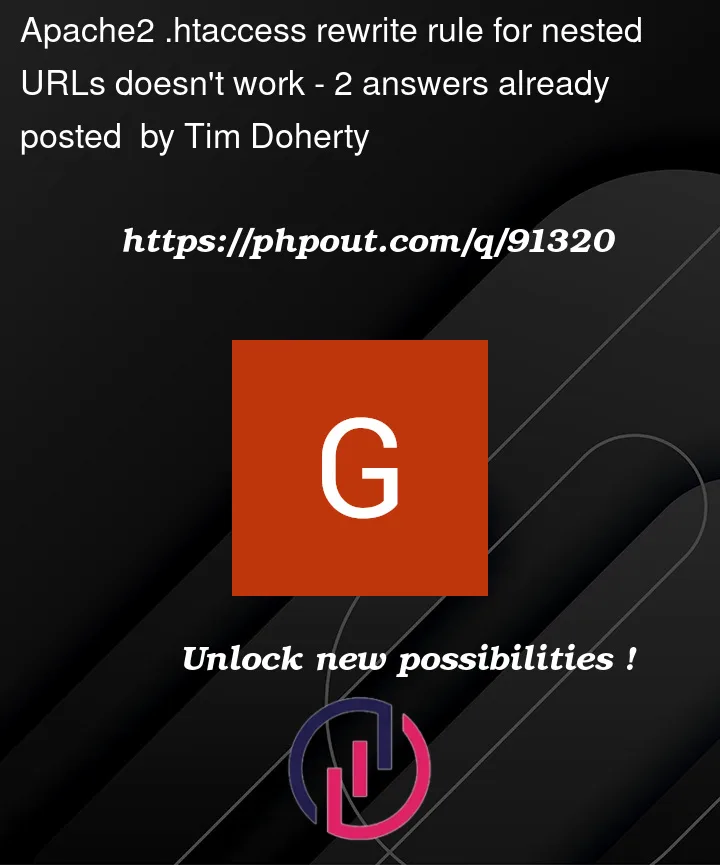I have simple php application with navigation based on domain/foo/bar nested urls.
For instance, I have main page index.php with about nav link which should navigate to domain/en/about, where en and about must be transfered to url param like index.php?url=....
But when I click to about I got to domain/en/aboutand
404 not found instead.
I have configured apache2 virtual domain config as:
<VirtualHost *:80>
ServerAdmin webmaster@localhost
<Directory /var/www/html/domain>
Options -Indexes +FollowSymLinks -MultiViews
AllowOverride All
Require all granted
</Directory>
DocumentRoot /var/www/domain/
ServerName domain.local
ServerAlias www.domain.local
ErrorLog ${APACHE_LOG_DIR}/error.log
CustomLog ${APACHE_LOG_DIR}/access.log combined
</VirtualHost>
And .htaccess file as:
order deny,allow
RewriteEngine On
RewriteBase /
RewriteRule .* index.php?url=$0 [QSA,L]
mod_rewrite for apache2 is already enabled.
Have no clue what I have missed.
Any help is appreciated!
Thank you in advance!




2
Answers
You need parenthesis around what you want to capture. Back-references indices start with ‘1’:
Your
<Directory>section andDocumentRootdirective refer to different locations, so regardless of where you’ve put the.htaccessfile, it’s not going to work as intended.However…
This rule is not strictly correct, since it ends up rewriting itself on a second pass by the rewrite engine. If it wasn’t for the
QSAflag, the originalurlparam value (that contains the originally requested URL-path) would be lost. The above ends up rewriting a request for/en/abouttoindex.php?url=index.php&url=en/about. Fortunately, your PHP script still reads$_GET['url']asen/about. But you can examine the full (erroneous) query string in$_SERVER['QUERY_STRING'].(And, if you were to simply prefix the substitution string with a slash, ie. a URL-path, you’ll get an endless rewrite-loop (500 Internal Server Error). But this could also result from adding additional rules later.)
You should prevent requests to
index.phpitself being rewritten, which you can do by adding an additional rule. For example:However, this will still rewrite your static assets (assuming you are linking to internal images, CSS and JS files?). So, you would normally need to prevent this with an additional condition that prevents the rule from being processed if the request already maps to a static file.
For example:
The CondPattern
-fchecks if the TestString maps to a file. The!prefix negates this. So the condition is only successful when the request does not map to a file.